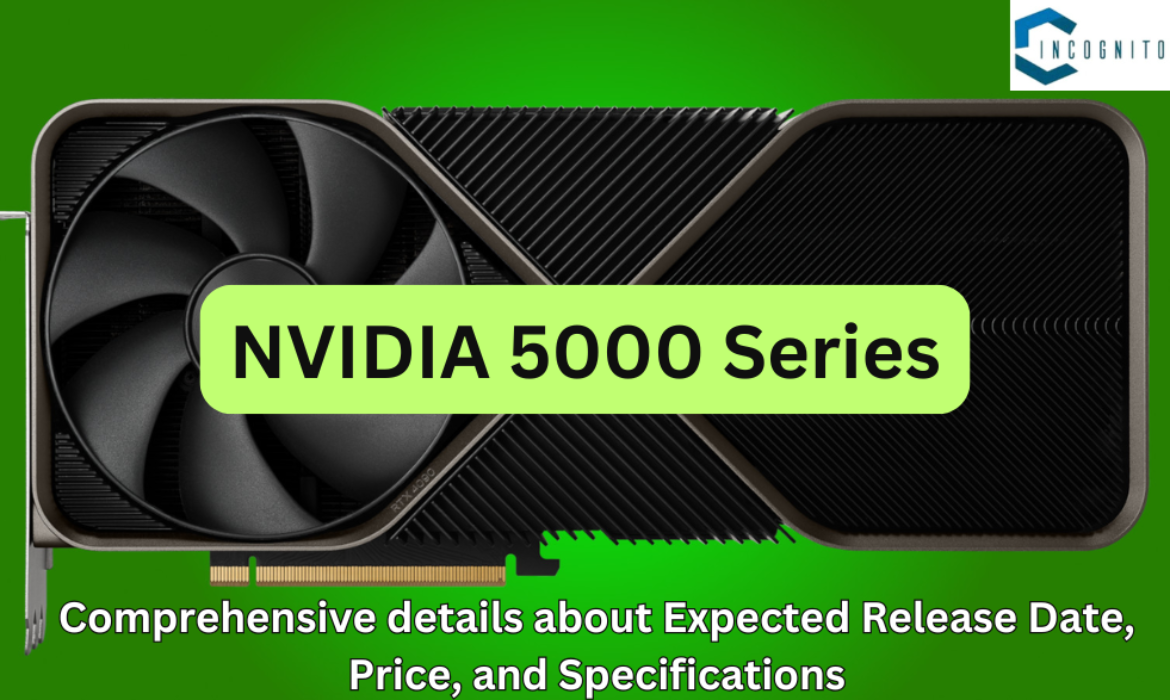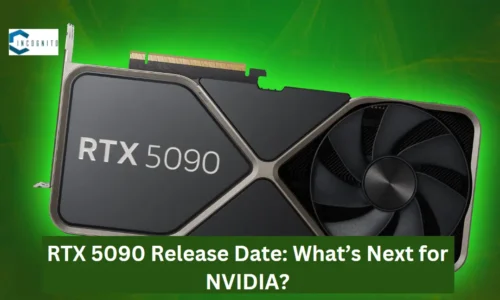
NVIDIA Corporation is a global company that specializes in tech related to visual computing, AI and accelerated computing. Being primarily famous for its graphics processing units, these products have revolutionized the gaming world.
Most recently there are talks happening about the upcoming NVIDIA 5000 series.
So let’s see its expected release date, price, specifications, and much more.
Keep reading, keep learning!
NVIDIA 5000 Series Product Lineup
The NVIDIA 5000 Series will provide a diverse lineup for all types of users:
- RTX 5090: Flagship targeted for enthusiasts requiring extreme performance.
- RTX 5080: A high-performance GPU targeted at serious gamers and other serious content developers.
- RTX 5070: Balanced mid-range with great performance at affordable prices.
- RTX 5060: Budget card for everyday casual gamers seeking good performance at lower resolutions.
- RTX 5050: Budget targeted for light gaming and normal usage.
Each model will come in different levels of VRAM and different customizations for unique uses.
Laptop Variants
NVIDIA takes this Blackwell architecture further into laptop GPUs as well:
- Laptop versions, such as RTX 5080M, RTX 5070M, and the RTX 5060M, will be optimized to consume lesser power while still showing excellent performance.
- These mobile GPUs support next-generation capabilities, including ray tracing and DLSS, which will bring desktop gaming experiences to your laptop.
NVIDIA 5000 Series Expected Release Date
NVIDIA has always followed a pattern of releasing new graphics card generations every two years or so. The last big release was the GeForce RTX 4000 series which arrived at the end of 2022. Following this pattern, most in the industry are speculating that NVIDIA is likely to arrive with the 5000 series either at the tail end of 2024 or early days of 2025.
It appears there were recent leaks and rumors suggesting that NVIDIA may schedule a launch event sometime in Q4 2024. This actually does align with product cycles, as the company always tends to present its new technology at CES (Consumer Electronics Show), or GTC (GPU Technology Conference).
Source: Nvidia watchers Team Green and kopite7kimi both agree on a 2025 release date. Here’s the tweet.
Expected Pricing
Prices for new graphics cards vary dramatically depending on these factors: the extent to which the newer generation surpasses the previous one, the cost of manufacture, and the overall environment of the market at the time of release. To put it into perspective, the RTX 4090 retailed at $1,599.
Based on the inflationary pressures and cost increases due to supply chain issues globally, which have been going on since the pandemic, the projected base model of the NVIDIA 5000 series would start somewhere around $1,699 to $1,899.
The higher models such as the RTX 5090 could start out up to above $2,000 depending on which specifications and performance enhancement improvements it came with.
Expected Specifications
The specifications of the NVIDIA 5000 series are, as a whole, still hypothetical but can be reasoned out from the standpoint of where technological advancements in GPU architecture are going and trends observed in the current models.
1. Architecture:
The series would probably be based on a refined version of NVIDIA’s Ada Lovelace architecture or perhaps even a new architecture altogether named after another relevant figure in the history of computing. This would probably include enhancements in ray tracing and AI-driven features.
2. Process Node:
There’s also a rumor that NVIDIA will switch over to a smaller process node-this time, for instance, from TSMC’s N4 or N5 nodes-meaning the transistors will be packed in much higher numbers, thus enabling much better performance per watt ratios.
3. CUDA Cores:
There’s quite a great probability that the number of CUDA cores will leap quite significantly in the new series compared to the RTX 4000 series. For example:
- RTX 5080 can have about 18-20% more CUDA cores than its previous series.
- RTX 5090 can also see a sharp peak as much as 30% more cores estimates.
4. Memory Configuration:
There is also an improvement in memory configuration:
- The base models would probably be coming in with GDDR7 memory rather than GDDR6X.
- The bandwidth of memory could also surge as much because of the bigger and wider memory buses (it may go up from a usual bus of 384-bit.)
5. Performance Improvement:
Performance-based benchmarks are also to surge as much as the previous generations:
- Potentially doubling the speed of ray tracing performance.
- DLSS technology will be useful for AI and may further evolve into either DLSS 4 or other similar generations.
6. Power Consumption:
Increased power consumption is also often associated with increased performance, but improvements in power efficiency technologies may also help to partly mitigate this disadvantage:
- Expect the TDP Thermal Design Power ratings to range around 350W for the mid-range models, and over 600W for the top variants such as RTX 5090.
7. Connectivity Features:
Also to be seen on the board are the latest connectivity standards like HDMI 2.1a support and updates in the DisplayPort, which will finally allow for even higher refresh rates at higher resolutions and thus greatly benefit gaming monitors.
8. AI Integration:
Expect the integration of AI capabilities not only to games but also into content creation tools that would be embedded directly within applications like Adobe Creative Suite or Blender, which already require extensive GPU acceleration.
9. Cooling Solutions:
As the heat output is expected to increase further, efficient cooling solutions would likely be necessary; thus, we can expect innovative designs from both NVIDIA’s Founders Edition cards and third-party manufacturers who will be focusing on efficient thermal management systems.
10. Gaming Performance Metrics:
Well, the last of course is the comparison against other titles which will determine how such cards perform in actual world conditions. Expect to see huge improvements in popular games, and especially those who make maximum use of ray tracing.
Also read: Top Semiconductor Companies
Conclusion
In short, details of the NVIDIA 5000 series are purely speculative at best until official announcements by themselves later this year or early next year.
In view of all these salient features, the NVIDIA 5000 Series is likely to become the game-changer in the gaming and professional graphics markets. At its core, it promises to set new benchmarks in graphics processing technology, ranging from great architectural advancements to memory capability improvements and better connectivity options.
With each passing day of anticipation over its launch, gamers and professionals alike are eager to see the ways in which these next-generation GPUs will revolutionize their play and work.




